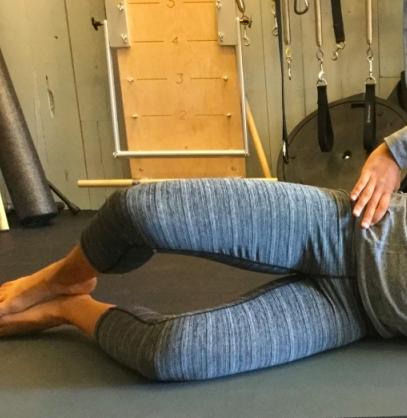If you're gonna do 'em, do 'em RIGHT!
So you're lying on your living room floor going through the motions of a clamshell because you read in Runner's World that it would make your knee feel better, or keep you from getting injured during your marathon training (or because your physical therapist said you should;-). You finally decide you've done enough because you kind of feel like you could lay there and do them all day and you're antsy to get on to your run or ride, or ski etc. You feel some sense of gratification because you at least tried to do something good for yourself, but you're still a little confused as to what the exercise did for you. If this sounds familiar, then you are either doin' it wrong, or you don't need to be doin' it at all!
Refer to the following videos and explanation of when the clamshell exercise may be an appropriate exercise to incorporate into a strength or rehabilitation routine
Although it is not very functional, requires only a relatively small amount of actual movement, and, quite frankly, looks a little silly, the clamshell has it's time and place for being an effective exercise to incorporate into a rehab, prehab, or general strength routine.
Inappropriate use of the clamshell:
- Performing with poor technique (see the video)
- Allowing pelvis to rotate towards the ceiling as you lift the knee
- Anteriorly tilting pelvis as you lift the knee
- Performing without sufficient loading or functional application
- If you are trying to actually build strength and muscle hypertrophy and it takes 20 or even 50 reps to begin to fatigue the muscle, you are not going to effectively build strength or hypertrophy the muscle. Instead, you will need to add load with the use of a resistance band around the knees and create fatigue within 10-15 repetitions
- If you are working on using the muscles during biking and running, you had better also be performing some kind of exercise that will fatigue the muscle in a more functional motion such as single leg squatting, lunging, and plyometrics.
Appropriate use of the clamshell:
- For "neuromuscular awakening": Perform as a warm-up prior to higher level exercises in order to improve the central nervous system recruitment of the muscle so you are able to use them during higher loading, more complex functional exercises, or even prior to participating in your sport of choice.
- For isolated hypertrophy and strengthening: You may add a resistance band in order to around the knees in order to increase load and fatigue with fewer reps (perform 3sets of 10-15). When I say fatigue, I mean, you can't do any more without breaking technique and your butt is burning!
- To build muscular endurance of the hip abductors/lateral rotators You may use it as a part of a side lying series that will work on improving the neuromuscular connection, and building endurance in the most important hip stabilizing muscles (Refer to additional videos for ideas here)
- For strengthening when weight bearing exercise is not an option due to injury or post-operative status
EMG studies have shown that, when performed against gravity, the clamshell exercise requires a relatively small amount of gluteus maximus (GMax) and gluteus medius (GMed) compared to some other exercises (single leg squats, side plank with hip abduction, lunges etc). However, many folks who would benefit from gluteal strengthening need to do so because of an imbalance in their hip musculature. They tend to overdevelop the large powerful muscles such as flexors (TFL, rectus femoris) and the muscles that are meant to stabilize the hip and pelvis become underdeveloped and subsequently weak. In order to restore a proper strength ratio of these muscles, it is essential that one chooses an exercise that will work the weaker muscles more than the already overly developed ones. Otherwise, your imbalance will only continue to exists and potentially become even more pronounced. In order to strengthen the gluteals without those larger muscles taking over, one must first isolate and activate them to assure they can find them and utilize them in more functional and higher load exercises. The clamshell is a great place to start.
In order to get the most out of this exercise, it must be performed with excellent technique. If you perform clamshells and are unable to feel significant muscular fatigue,
then you are probably not performing it appropriately!
Thanks for reading!
Anya Gue, DPT
